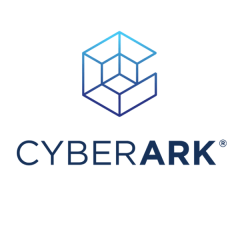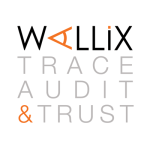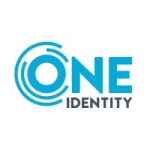What is our primary use case?
I have been working with CyberArk for the past five years. I do installations, support, and presales.
We have installed the CyberArk solution and have been using it as a PAM solution.
The main reason for having the solution in place is to isolate and monitor all previous activities that have taken place within the organization. The second thing is to make sure all the previous accounts have been onboarded to the solution and accurately monitored as well as passwords have been managed as per the policies defined. The third thing is to make sure users are unaware of their previous account passwords. Those should be centrally stored and located in one of the solutions where we can manage them per our policy or ask users to raise a request for internal workflows on the solution, in case of any emergencies. The last thing is for managing the service account passwords.
How has it helped my organization?
Initially, the IT team and other teams used to access the servers manually. Now, because of this solution, everyone is onboarded on the PAM and we can direct all sessions to the PAM. Also, we have control of all decisions and activities being performed. Along with that, we are satisfying audit requirements with this because we are getting reports to track what we need to comply with any regulated requirements.
We have an option for protecting various kinds of identities. It also provides you with a medium for authenticating your systems, not only with passwords, but also with the PKI certificates and RSA Tokens. There is also Azure MFA. So, there are many options for doing this. It has a wide range for managing all security identities.
What is most valuable?
The most valuable feature is CyberArk DNA, which is an open-source tool used for scanning all servers, like Linux or Unix. We can get a very broad idea of the scope and picture of the servers as well as their predefined vulnerabilities, the service accounts running on them, and the dependent accounts running on those services. We get a very wide scope for all our servers and environments.
There are some other options like Privileged Threat Analytics (PTA), which is a threat analytics tool of CyberArk that detects violations or any abnormal activities done by users in the privileged solution. This tool is very unique, since other PAM program solutions don't have this. This makes CyberArk the unique provider of this feature in the market.
It is very easy to maintain passwords in the solution, instead of changing them manually or using other tools. So, it is a centralized location where we have accounts and passwords in a database based on our defined policies.
Product-wise, CyberArk is continuously improving. For the last two years, it has brought on new modules, like Alero and Cloud Entitlements Manager. Alero gives VPN-less access to the environment. So, there are many new things coming into the market from CyberArk. This shows us that it is improving its modules and technology.
We can integrate the solution with any other technologies. This is straightforward and mostly out-of-the-box.
For DevOps, we are using Conjur with a Dynamic Access Provider. We use those modules to make sure identities on other environments have been secured. For Azure and other cloud environments, we have out-of-box options where we can do some little configuration changes to get those identities secured. We have a process of managing these identities for RPA as well.
It has a centralized page where you can manage everything. This makes work easier. You don't have to remember different module URLs or browser applications. It is very easy to get all the secure identities of other environments into a single page, which is very important for us as it helps a lot in terms of operations, e.g., reduces management time. This is a single page where you can manage all accounts and onboard them to the CyberArk. You can then secure and see passwords from everywhere. So, there is a single pane of glass where you can manage all the identities across environments as well as across different types of identities.
We have a module called Endpoint Privilege Manager (EPM) that is used for the endpoint, managing the least privilege concept on Windows and Mac devices. We also have On-Demand Privilege Manager (OPM), which is used on UNIX and AIX machines. Using these modules, we can achieve the least privilege management on endpoints as well deploying on servers, if required.
What needs improvement?
The continuous scanning of the assets is limited to Windows and Unix. We like to have the solution scan any databases, network devices, and security devices for privileged accounts. That would be very helpful.
For least privilege management, we need a different level of certification from privileged management. Least privilege management comes under endpoint management. It takes time to get used to it, as it is not straightforward.
For how long have I used the solution?
I have been well-versed with the CyberArk product for the last five years of my career.
What do I think about the stability of the solution?
The solution is very stable.
Once the project installation was done, we put this product into the environment based on the policies that we defined, but it had initial hiccups. The policies that we defined might have hampered and raised issues, but the product is very stable.
What do I think about the scalability of the solution?
The solution is very scalable. The landscape gets improved every day. It is scalable because it integrates with Azure, AWS, and other cloud solutions. Also, we have modules that work for DevOps, Secrets Manager, and Endpoint Privilege Manager. So, CyberArk is not just a PAM. It covers most of the products in the threat landscape. We do not worry about scalability in terms of CyberArk.
How are customer service and support?
Our primary support is partners with whom we are interacting throughout the project. Then, if an issue is not yet resolved, we will raise a case with CyberArk support. They have certain SLAs that they are following based on the seriousness of an issue. The response will be according to that.
The support is good.
How would you rate customer service and support?
Which solution did I use previously and why did I switch?
We didn't use another solution before we bought this one.
How was the initial setup?
The initial setup is straightforward. They have done major reforms on the installation process, so now we have automatic installations. We just have to run a particular script, and that does the installation for us. We also have a manual installation and that is our legacy process. So, we have both options. It is up to the customer how to move forward, but it is pretty straightforward.
What about the implementation team?
RNS did the installation for us. Our experience with them was pretty good. They followed all the processes per project management standard. They tracked all the activities, making sure the project was delivered on time, which was good.
One dedicated person is enough for the solution's maintenance.
What's my experience with pricing, setup cost, and licensing?
CyberArk DNA is free if you purchase the CyberArk solution. There is no additional charge for CyberArk DNA, which is great.
Which other solutions did I evaluate?
Before, I used to work as a system integrator. I looked into other PAM solutions, like ARCON and BeyondTrust.
What other advice do I have?
Make sure your use cases are covered. Go for a small PoC, if possible, to make sure that all your use cases are covered and delivered per your expectations. Check whether the solution is on-prem or Azure and the resource utilization needed for implementation. For your IT expansions in future, check whether you will need any additional modules in future or if the existing ones will meet your future requirements.
With Secure Web Solutions, we could access any web applications from a PC. It was like a native tool where you could browse from your Chrome or any web applications, and the applications would be routed to the CyberArk where it was securing the web applications and access. However, this product was deprecated last year so it is no longer supported from CyberArk's point of view.
I would rate CyberArk PAM as nine out of 10.
Disclosure: My company does not have a business relationship with this vendor other than being a customer.



















